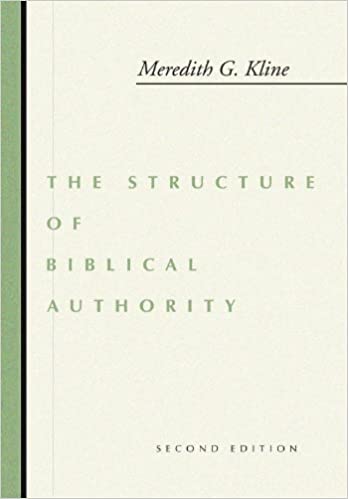A Brief Book Summary from Books At a Glance
By Steve West
About the Author
Meredith G. Kline was an Old Testament professor at Westminster Theological Seminary. His books and articles were highly influential in Old Testament studies.
Introduction
The Structure of Biblical Authority consists of essays that explore the implications of covenant treaty patterns in the ancient Near East for the study of the Bible. Kline examines biblical books (e.g. Exodus, Deuteronomy), as well as the Old and New Testaments as wholes, arguing that they are parallel in structure to established covenant patterns. He examines a host of practical and theoretical issues of interpretation.
Table of Contents
Part 1 Canon and Covenant
Introduction
Chapter 1 Formal Origins of Biblical Canon
Chapter 2 Covenantal Bible
Chapter 3 Canon and Covenant Community
Chapter 4 Canonical Polities, Old and New
Part 2 Collateral Studies
Chapter 1 The Two Tables of the Covenant
Chapter 2 Dynastic Covenant
Chapter 3 The Intrusion and the Decalogue
Chapter 4 The Old Testament Origins of the Gospel Genre
Summary
Part I Canon and Covenant
Chapter 1: Formal Origins of Biblical Canon
The treaty document is extremely important for our understanding of the background behind the OT Scriptures. Biblical covenants bear the mark of standard treaty forms. The suzerain would put the treaty stipulations in writing, and copies would be made for preservation. Curses were assigned to the vassals who broke the covenant terms, and warnings were given about changing the terms or altering words. Other forms of writing and literature shaped the literature of the OT as well. Pillars and emblems were set up by kings to show their ownership of the land and authority, as well to identify royal grants they had made to their vassals. Abram received a royal grant from God, and the royal grant is also referred to in the days of Moses and Joshua. Treaties had a historical prologue and witnesses. These were some of the features of treaty patterns in the time when the OT canon was beginning to be written, and we find their elements in the OT documents.
The international treaty is the most important form, and it is the form that shaped the Decalogue and Deuteronomy. They both follow the same structure and pattern. Instructions are provided for depositing the documents and keeping them safe. God inspired the biblical treaties but cast the structure of his revelation in the common form of that time. Canonical Scripture is divinely authoritative. Some scholars have rejected the symmetry between Hittite treaty forms and Scripture: this is owing to their critical presuppositions which place the canonical documents in the post-exilic period. The historical facts, however, point to the writing of the covenant treaties as taking place long before the exile. It was when God founded the kingdom of Israel at Sinai that he provided the beginnings of the covenant documents.
Chapter 2: Covenantal Bible
Paul identifies the OT Scriptures broadly as the covenant. The OT is more than a compendium of human writings: it is the covenant of the King. God ruled Israel, and the canonical writings established and served the covenant. The various genres found in the OT are all connected to covenant. When we come to the law, it is clear that these are the stipulations imposed by the suzerain, and elaborations upon his rules. All of life fell under God’s terms. From the cultic practices to warfare, everything in Israel related the people to the covenant Lord.
Going beyond the parameters of most ANE treaties, God also stipulated how the people were to structure their social life and interact with each other. The historical writings serve as prologue (Genesis-Exodus 20), and then as extensions of covenant history that show God’s dealings with his people. The entire shape of the historical material runs on covenantal realities; the documents were official witnesses. They were also the backdrop for the prophetic witness. Prophets were called to apply the covenant and call people to faithfulness to it. Much of the vocabulary and themes treated by the prophets clearly comes from the previous covenantal documents.
[To continue reading this summary, please see below....]The remainder of this article is premium content. Become a member to continue reading.
Already have an account? Sign In
Buy the books

THE STRUCTURE OF BIBLICAL AUTHORITY, by Meredith G. Kline